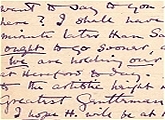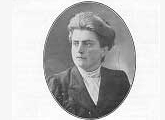George Bernard Shaw: Man and Cameraman
Revealing the legacy of George Bernard Shaw's photographic collection
"If Velasquez were born today, he would be a photographer and not a painter." George Bernard Shaw, quoted in The Best of Popular Photography, p276.
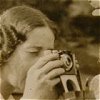
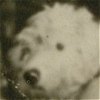
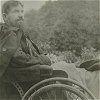
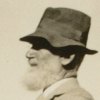
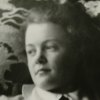
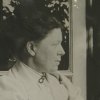
G.B. Shaw’s photographs reproduced with the permission of the Society of Authors, colour images copyright © LSE Archives.
Man and Cameraman is a project to conserve, catalogue, digitise and promote the photographic collection of George Bernard Shaw. Shaw collected around 16,000 photographs taken by himself and others and these will be fully investigated for the first time to reveal Shaw's activities and the evolution of photographic processes. Bernard Shaw was not only a prolific playwright, writer and social-political commentator and thinker but an avid amateur photographer: taking and collecting images from the 1860s until his death in 1950.
Shaw left his paper and photographic archives to London School of Economics and Political Science (LSE) and the British Library and his home (Shaw's Corner, Hertfordshire) to National Trust (NT), it is here the photographs were initially housed before being transferred to LSE. Thus the project extends his desire to open up his collections to researchers and interested parties.
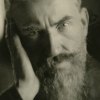

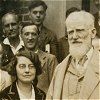
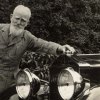
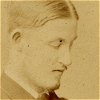
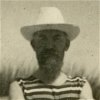
Photography lets us peer into the past and Shaw's photographs give us an informal view into his circle including writers, reformers, actors and actresses. Photographs show us how places used to look and what people did in their private lives - they inform our knowledge of society and its famous personalities: revealing the heritage of us all. Shaw's images include informal prints of people such as: Auguste Rodin; Augustus John; Beatrice and Sidney Webb; Harley Granville-Barker; and Lilliah MaCarthy. They offer a glimpse into the early 20th century theatre and film and include images of stars of Shaw productions such as Vivian Leigh as well as visuals of sets.
Now photography is regarded as an artistic form but in Shaw's time it was not, the collection lets us see how photographers were pushing the boundaries and using it in experimental and artistic ways. Shaw played with light and perspective to advance his craft. He also wrote on the subject for example, reviewing early photography shows.
The project partners (LSE and the National Trust) have worked with free-lance conservators, staff and volunteers to dust and re-house the photographs in high-purity storage materials. Shaw's photographic albums have been conserved in a specialist studio to repair damage and will be photographed so people can look through them. As well as prints there are about 8,000 negatives, these are particularly fragile as they degrade in even moderate conditions. They will be sealed in special bags and frozen to halt their deterioration.
Work on cataloguing the 16,000 photographs and digitising 8,000 photographs and all the negatives is now underway and this will let people know what the collection contains. Cataloguing can also reveal stories behind the images as each one is researched. Digitising will provide virtual access to those images taken by Shaw and those out of copyright ensuring their long-term preservation and revealing for the first time Shaw's photographic legacy to the nation and providing a window into his world.


- introduction by Karyn Stuckey, Man & Cameraman Archivist, London School of Economics.
This month we highlight descriptions for the photographs of George Bernard Shaw, and for some related collections. There are also links to selected websites and suggested reading
Related collection descriptions
- George Bernard Shaw Photographs: 20,000 items and 15 volumes, dating from around 1865-1950.
- George Bernard Shaw Diaries: 18 volumes, 1885-1897, relating to Shaw's daily life in London.
- Nancy Astor (1879-1964): political papers and personal correspondence of Shaw's friend Viscountess Astor; the collection includes photographs of Astor and Shaw.
- Fenner Brockway (1888-1988): friend of Shaw, and the editor of the journal of the Independent Labour Party.
Suggested reading
Links are provided to records on Copac for these items. The Copac library catalogue gives free access to the merged online catalogues of major University, Specialist, and National Libraries in the UK and Ireland, including the British Library. For more information about accessing items see the FAQs on the Copac website.
- Shaw: the Annual Bernard Shaw Studies journal of the International Shaw Society Records on Copac
- Bernard Shaw by Michael Holroyd (1997) Records on Copac
- The Bodley Head Bernard Shaw: collected plays with their prefaces (7 volumes, 1970-74) Records on Copac
- Bernard Shaw: Collected Letters, 1874-1897, edited and with an introduction by Dan H. Laurence (1965) Records on Copac
- An Autobiography, 1856-1898: selected from his writings edited by Stanley Weintraub (1969) Records on Copac
- The Best of Popular Photography edited by Harvey V. Fondiller; includes Shaw's comment quoted above (1979) Records on Copac
Links are also provided here to records on Zetoc for these items. Zetoc provides access to the British Library's Electronic Table of Contents. Using Zetoc allows you to search the tables of contents of approx. 20,000 current journals and approx. 16,000 conference proceedings published per year. The database covers 1993 to date. For more information about accessing items see the FAQs on the Zetoc website..
-
George Bernard Shaw, 'Unmechanical' Photography and Unconventional Science by M.B. Parsons and G.J. Pascuzzo, History of Photography (2002) volume 26, part 3, pages 170-177.
- Reflecting on the 150th anniversary of George Bernard Shaw by M. Bowley, Counsel, August 2008, pages 32-33.
Related links
- Man and Cameraman: revealing the photographic legacy of George Bernard Shaw. LSE Archives Project website.
- Out of the Box: the LSE Archives' blog post about the Man and Cameraman Project.
- Recollect: project by artist-in-residence Heather Barnett using George Bernard Shaw photographs at LSE, 2007.
- The Shaw Society: holds monthly meetings in London; the President of the Society is the biographer Michael Holroyd.
- International Shaw Society: based in the U.S., but "ISS business is conducted more online than not".
- Nobel Prize in Literature 1925: the Nobel Prize website includes the text of the Nobel committee's presentation speech.
- Shaw's Corner: the National Trust cares for the Edwardian villa in Hertfordshire, home of Shaw from 1906 until his death in 1950.



